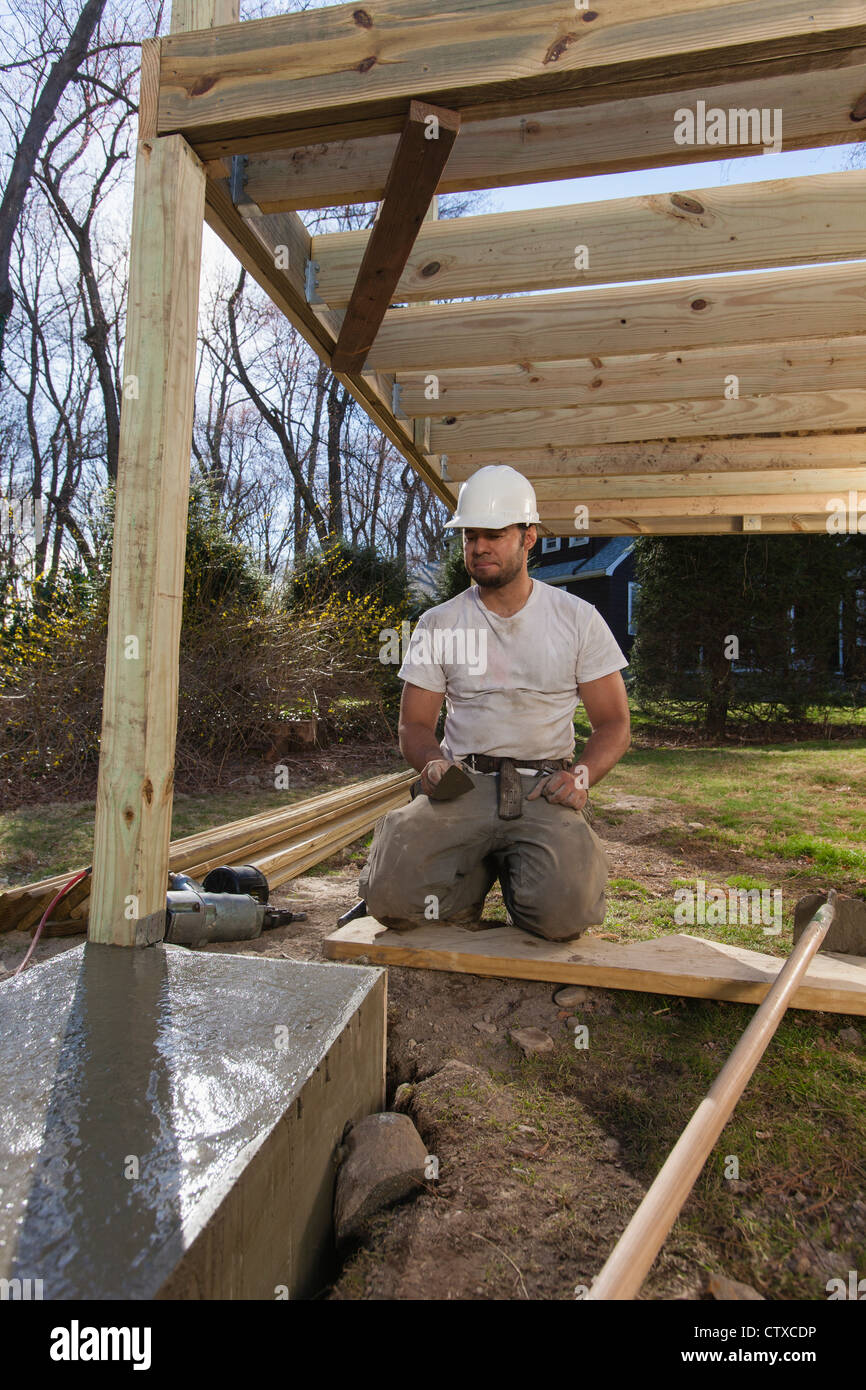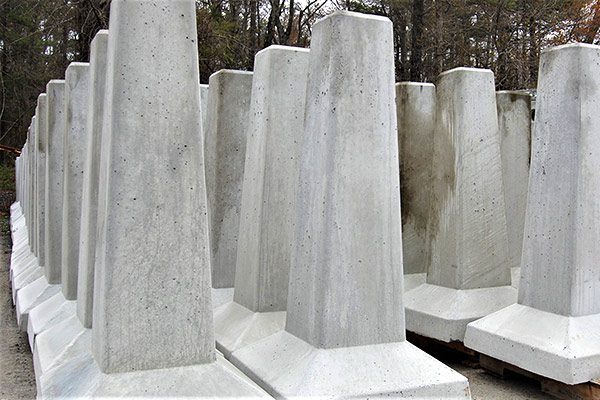Deck Footings Demystified: Your Blueprint for a Safe, Lasting Outdoor Haven
Selecting the Right Deck Footings for Stability and Toughness
When it involves building a deck, among one of the most vital decisions you will certainly make is picking the right grounds for stability and resilience. The long life and security of your deck depend greatly on the kind of grounds you pick, as they offer the vital support and stability to withstand the test of time. With a myriad of options offered, it can be frustrating to figure out which footings are best fit for your specific requirements. In this discussion, we will certainly discover the different kinds of deck footings, take into consideration the essential variables to evaluate when deciding, and look into the benefits and drawbacks of different choices. By the end, you will certainly have a clearer understanding of the selections at hand and be far better furnished to make an educated decision for your deck job.
Kinds of Deck Grounds
These grounds are composed of a round hole loaded with concrete, which provides a strong structure for the deck blog posts. Concrete pier grounds are reasonably easy to set up and offer exceptional stability, making them a preferred option for several deck jobs.
One more kind of footing is the helical pile ground. Helical piles are steel shafts with helical plates affixed to them. These footings are installed by screwing them right into the ground, which develops a secure structure for the deck. Helical pile grounds are ideal for locations with tough soil conditions, as they can be set up in practically any kind of dirt. They likewise enable simple modification and progressing of the deck if needed.
Alternatively, some builders decide for precast concrete footings. These footings are made of sturdy concrete and come in numerous shapes and dimensions to suit various deck designs. Precast concrete grounds are practical to install and supply a stable base for the deck framework.
Finally, an additional choice is the post-in-anchor ground system. This sort of footing involves driving a metal support into the ground and affixing it to the deck message. It provides flexibility in regards to placing the deck blog posts and appropriates for decks with lightweight frameworks.
When choosing the appropriate type of deck ground, it is important to think about elements such as dirt problems, deck load, and regional building ordinance (Deck Footings). Consulting with an expert specialist or structural engineer can assist make certain the suitable ground is chosen for a risk-free and secure deck
Aspects to Consider When Selecting Grounds
When picking the appropriate footings for a deck, it is crucial to meticulously think about different variables such as dirt problems, deck load, and adherence to regional building ordinance. These factors play a significant function in making sure the stability and resilience of the deck structure.
Among the primary aspects to think about is the soil problems. The sort of soil on which the deck will be built determines the kind of footings called for. Decks built on loosened or sandy dirts might require much deeper grounds to give appropriate support and avoid settling. On the other hand, decks developed on clay or extensive soils might need grounds that can suit the soil's tendency to expand and agreement.
An additional crucial aspect is the deck lots. The weight of the deck, consisting of the materials used and any kind of prospective online loads such as furniture or celebrations, should be taken into consideration when picking grounds. The footings need to be developed to birth the weight of the deck and distribute it evenly to stop any structural issues or failings.
Lastly, adherence to neighborhood structure codes is vital. Building ordinance differ from region to area, Read Full Report and it is important to abide by the particular requirements established by the regional authorities. Deck Footings. These codes guarantee that the deck is constructed safely and fulfills the required standards for architectural integrity and load-bearing capability
Concrete Footings: Pros and Disadvantages

Concrete footings supply a number of advantages and disadvantages when made use of as the structure for a deck. On the positive side, concrete footings provide outstanding stability and sturdiness.
An additional advantage of concrete grounds is their convenience. They can be put right into different shapes and dimensions to suit different deck styles and setups. Concrete footings can be personalized to fit the specific needs and requirements of the deck framework.
Nevertheless, there are also some drawbacks to making use of concrete grounds. This can increase the total expense of the deck project and might need professional aid.

Helical Piers Vs. Sonotubes: Which Is Better?
In thinking about the structure alternatives for a deck, the comparison between helical piers and sonotubes is crucial in identifying the exceptional option. Helical piers, likewise referred to as screw piles, are steel shafts with helical plates connected to them. They are twisted into the ground utilizing hydraulic machinery, offering a steady and sturdy foundation for the deck. On the various other hand, sonotubes are round kinds constructed from cardboard or fiber product that are full of concrete. They are positioned in an opening dug right into the ground and supply assistance for the deck.
When it concerns stability and resilience, helical piers have the top hand. important link The helical plates on the piers develop a strong grip with the dirt, changing or stopping any type of motion of the deck. This is especially valuable in locations with unstable or changing dirt problems. Sonotubes, on the other hand, rely exclusively on the concrete filling for security, which may not supply the very same degree of strength and resistance.
In regards to installation, helical piers are fairly much easier and faster to set up contrasted to sonotubes. The hydraulic equipment used to turn the piers into the ground guarantees a reliable and quick procedure. Sonotubes, on the various other hand, require digging openings and putting concrete, which can be lengthy and labor-intensive.
Additionally, helical piers are a more flexible choice. If needed, they can be utilized in numerous soil conditions and can be readjusted or reinforced. Sonotubes, on the various other hand, might call for extra assistance, such as rebar, in particular dirt conditions or areas with high tons needs.
Selecting the Right Footings for Your Deck's Dimensions
For ideal architectural honesty, it is vital to carefully choose the ideal grounds that align with the dimensions of your deck. The measurements of your deck, including its elevation, size, and size, play a considerable function in determining the kind and dimension of grounds required.
When selecting footings for your deck, it is essential to think about the load-bearing capacity of the soil. The weight of the deck, combined with the weight of any furniture or people on it, applies a substantial pressure on the grounds (Deck Footings). Consequently, it more info here is important to pick grounds that can appropriately sustain this weight without sinking or moving in time.
The dimension and shape of the grounds must likewise be considered. Bigger decks with better dimensions need larger footings to give adequate stability and assistance. The shape of the footings, whether they are round or square, depends upon the design and format of the deck. Furthermore, the depth at which the grounds are mounted must be established based on the frost line in your area to avoid any heaving or changing as a result of freezing temperature levels.
Final Thought
In verdict, choosing the ideal deck grounds is essential for making certain security and sturdiness. Aspects such as the kind of grounds, the deck's measurements, and the pros and cons of different options ought to be thought about.
These grounds consist of a cylindrical hole filled up with concrete, which supplies a strong structure for the deck blog posts. Concrete pier footings are reasonably very easy to install and use outstanding stability, making them a prominent choice for numerous deck jobs.
Precast concrete footings are practical to install and offer a stable base for the deck structure.
It offers versatility in terms of positioning the deck articles and is suitable for decks with lightweight frameworks.
Concrete grounds supply several advantages and disadvantages when used as the structure for a deck.